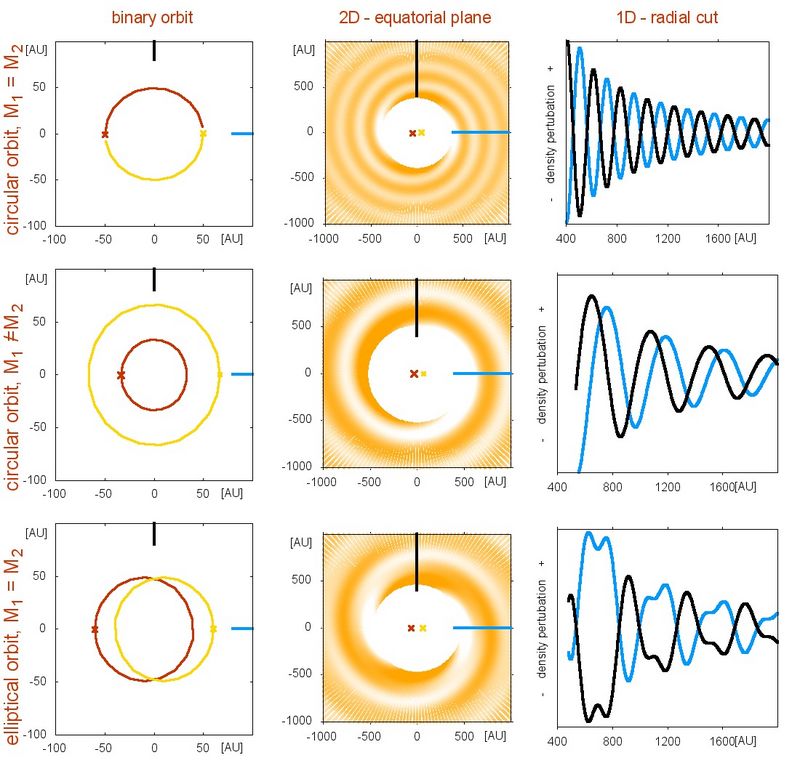ASTROPHYSICS
Gas Induced Orbital Decay of Binary Systems
Principal Investigator:
Christina Korntreff
Affiliation:
Jülich Supercomputing Centre (Germany)
Local Project ID:
hbn30
HPC Platform used:
JUROPA of JSC
Date published:
Using hydrodynamic simulations on GCS supercomputers, a team of scientists from the Max-Planck-Institute for Radio Astronomy, Bonn, and Jülich Supercomputing Centre investigated the influences of surrounding gas onto the period of binary systems.
Most stars are a member of a binary or even higher order system. In different stellar environments differences in the stellar binary populations have been observed. A team of scientists from the Max-Planck-Institute for Radio Astronomy, Bonn, and Jülich Supercomputing Centre looks at very young binary systems still embedded in their natal gas. Using hydrodynamic simulations on GCS supercomputers, the scientists investigate the influences of this surrounding gas onto the period of such binary systems.
The two stars of the binary system orbit each other (see figure) thereby inducuing a density perturbation (Figure, cut through equatorial plane), which manifests itself as wave with decreasing amplitude as function of the distance to the binary (Figure, radial cut, phi = 0° and phi = 90° components are plotted). Three different cases are investigated: (i) a binary consisting of stars of equal mass, (ii) and one with a mass ratio of 1:2 both on circular orbits, and (iii) the case of eccentric orbits.
A circular binary system with equal stellar masses induces two symmetrical spiral arms in the surrounding gas (first row), whereas for a mass-ratio of 1:2 one of the spiral arms nearly vanishes (second row). The binary system on an elliptical orbit (eccentricity = 0.2) results in an asymmetric acoustic wave (third row).
The energy inserted into wave generation is lost from the binary system. As a result the distance between the binary shrinks. Above simulations are used to determine the reduction of the orbit, which in extreme cases could lead to the merging of the two stars.
Christina Korntreff
Jülich Supercomputing Centre, Institute for Advanced Simulation
Forschungszentrum Jülich GmbH, D-52425 Jülich
e-mail: c.korntreff@fz-juelich.de
Prof. Dr. Susanne Pfalzner
Max-Planck-Institute for Radio Astronomy
Auf dem Hügel 69, D-53121 Bonn
e-mail: spfalzner@mpifr-bonn.mpg.de
September 2013
JSC Project ID: hbn30
